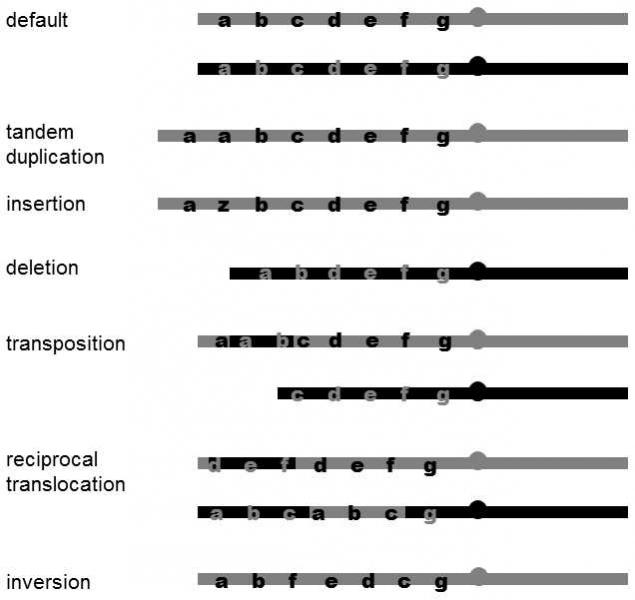III.5.3 Deletions, insertions, duplications, translocations and inversions are distinguished at the DNA chain level.
Mutations at the level of the entire DNA section can again be classified into several types (Fig. III.2).In deletions, insertions andduplications, a certain DNA section is lost or, to the contrary, duplicated.The duplified section can either be immediately next to the original section (tandem duplication) or can be in an entirely different part of the genome. The sections that are, themselves, tandem duplicated can duplicate most readily.At the sites of tandem duplication, incorrect pairing and then nonreciprocal recombination can occur between two homologous chromosomes, as a consequence of which deletion of a certain DNA section occurs on one chromosome, with insertion at another chromosome.
Translocation entails relocation of a certain DNA section to a different site in the genome.If this is reciprocal translocation, then two DNA sections exchange places on the chromosomes; in transposition, only one DNA section is relocated.
In inversion, a certain DNA section is cut out of the chromosome and inserted in the same place with the opposite orientation. In mammals, the vast majority of chromosome restructuring entails translocations; in contrast, inversions are involved in drosophila (Spradling & Rubin 1981).Drosophila are apparently pre-adapted to tolerate inversion in that recombination does not occur during meiosis in the nuclei of male gametes and thus deletion also does not occur in the inversion sections in heterozygote males.

Fig. III.2. Types of mutations at the level of the DNA chain.
It is striking that translocation and, in fact, other chromosomal restructuring rarely affect the genes on the sex X-chromosomes of mammals (termed Ohno’s rule (Ohno 1967).)Apparently, such restructuring, and especially translocation of genes between sex chromosomes and autosomes could interfere in the mechanism of determining sex based on the gene dose (number of copies of the given gene in the diploid cell) or in the mechanism of compensation of the gene dose (Kelley & Kuroda 1995).
